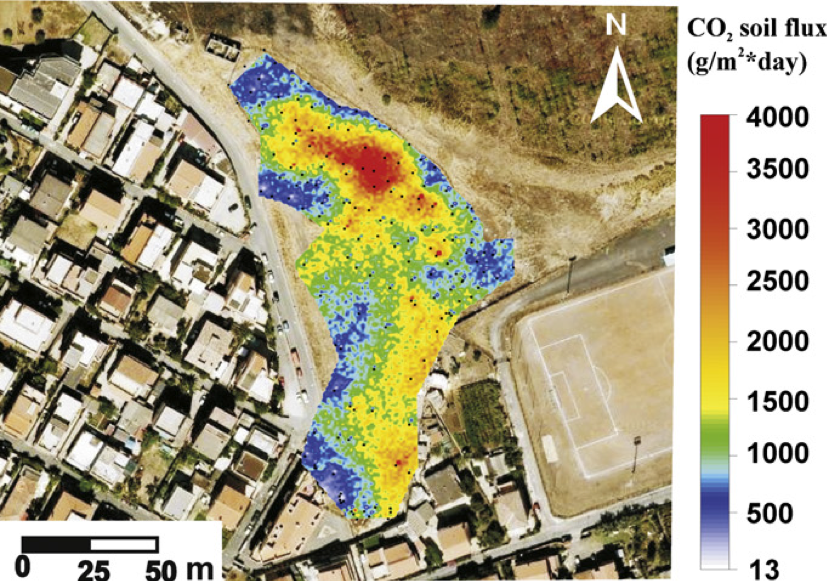 .
.WP3- Evaluation and mitigation of natural CO2 output
Assessment of the natural CO2 output in the Rome Metropolitan area
Surveys of diffuse soil CO2 flux by accumulation chamber will be carried out in the so far unsurveyed zones of Rome Metropolitan area. Priority will be given to the zones where available information (e.g. chemico-physical parameters and PCO2 of groundwaters, presence of structural highs revealed by positive gravimetric anomalies) indicates the likely presence of an anomalous emission of endogenous gas. The related maps of soil CO2 flux will be produced. In the most anomalous sites, the gas origin will be ascertained by isotopic analyses (δ13C of CO2). The total output of CO2 of natural origin from the city of Rome area will be estimated and seasonal repetition of the surveys will allow to establish the possible temporal variations in the gas output.
Possible mitigation of natural CO2 output
The worldwide experience will be reviewed with the aim of selecting the most appropriate CO2 absorbing vegetation suitable to be planted at anomalous gas releasing sites, considering the local environmental conditions. The experimental test, will be carried out in cooperation with Tellus s.r.l., spin off of Scuola Superiore di Sant’Anna, Pisa, and will include the following phases:
- Assessment of air CO2 concentration (by IR portable devices) at different heights, together with environmental parameters at the anomalous gas releasing zone selected as test-site. Simulation of the air gas dispersion, following the method used by Granieri et al. (2014).
- Assessment of soil parameters and identification of the most suitable vegetation type (perennial herbaceous, shrubs, trees) able to absorb CO2 and turn it into rapidly accumulated plant biomass. Planting and management of selected CO2 adsorbing vegetation to ensure its regular growth and maximize CO2 uptake.
- Repetition of the air CO2 concentration (and environmental) measurements in the same points, statistical data processing and evaluation of the results.
Field activity of Task 2 will start in springtime 2021.

